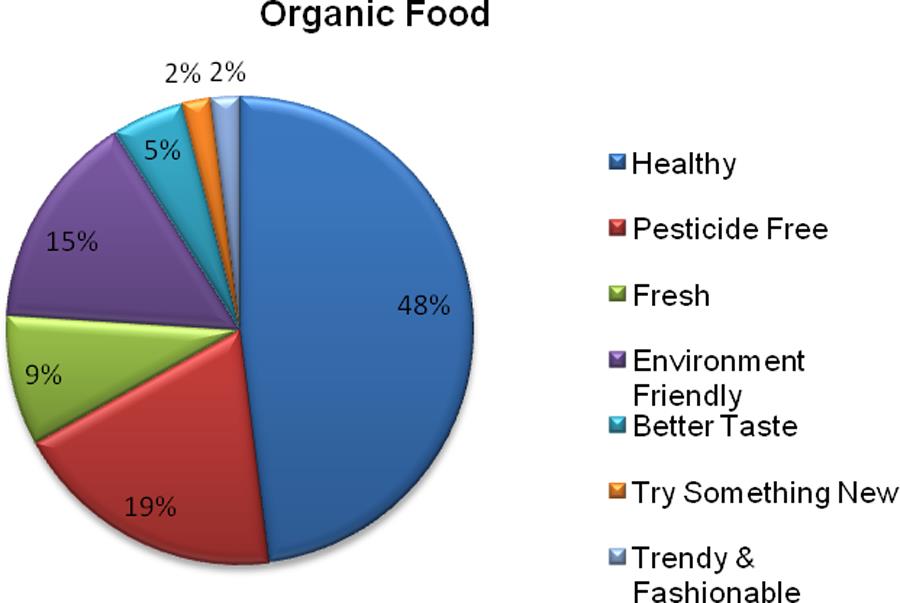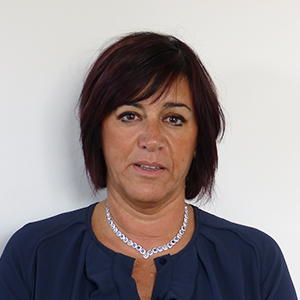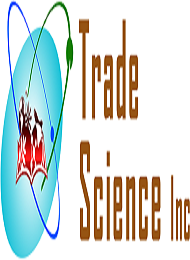Theme: Innovation and Creation in Chemistry Development
Organic Chem 2022
- Welcome Message
- About Conference
- Session/ Tracks
- Market Analysis
- Major Societies and Association of Organic and Inorganic Chemistry
- Major Worldwide Companies of Chemistry
Organizing Committee Members of Organic Chemistry 2022 warmly welcome you all in beautiful city Zurich, Switzerland for 26th International Conference on Organic and Inorganic Chemistry being held on October 24-25 2022.
Organic Chemistry 2022 grates platform to share their ideas and new researches and deliberated theme of the Conference is "Innovation and Creation in Chemistry Development".
Organic Chemistry 2022 will cover all aspects of contemporary organic synthesis and provide a symposium for the ever more exciting facts and discoveries that continue to emerge. Light on the world prestigious specialists and speakers at our conference to speak regarding new Development in the field of Chemistry to develop more innovations that introduced in the field of Chemistry. This will offer a great platform for students and researchers, scholars, scientists to exhibit their work and obtain recognized amidst the foremost individuals.
Conference Highlight
Organic Chemistry, Inorganic Chemistry, Environmental Chemistry, Biochemistry, Geochemistry, Drug Synthesis, Green Chemistry, Photochemistry, Forensic, Chemical Engineering, Chemical physics, Pharmacology, Agriculture Chemistry, Toxicology, Material Science, Food technology.
Target Audience
- Organic Chemist
- Inorganic Chemist
- Professor in ChemistryAssociate and Assistant Professors in Chemistry
- Head of chemical Departments
- Post Graduate and Graduate in Medical Chemistry
- Laboratory Chemist
- Chemical Scientist working on Material
- Experts in the development in organic Chemistry.
Why to Attend?
Organic Chemistry 2022 aims to gather Scientists, Researchers, research Scholars, and Students exchange their researches, experiences and their ideas on all aspects on Organic and Inorganic Chemistry. Enable Participants to share their ideas and expand network with chemist, researchers and Research scholars. Incredibly famous speakers with their conclusive charts on the development in Chemistry are sings of this meeting. The ultimate achievement of the conference is to help the medical professionals, chemical Industries, and general public to understand and create awareness across the world.
Track 1 Aspect of organic Chemistry
Organic Chemistry is the study of the structure, properties, configuration, reactions, and construction of Carbon Containing compounds. Maximum organic compounds contain carbon and hydrogen, but they may also contain any number of other elements. In organic chemistry we will study about the reaction and how chemist used to assimilate carbon based structures and also the scientific methods to designate them. We will also know about how those reactions take place on a molecular level with reaction mechanisms.
- Health Care
- Crop production and Agriculture
- Non-Food uses of crops
Track 2 Bioorganic and Biochemistry
Bioorganic Chemistry is the new direction which is necessary to discussed with the application of the tools of the chemistry to understanding of biochemical processes. Such an understanding is repeatedly achieved with support of molecular model, chemically synthesize in laboratory.
- Transformation
- Biosynthesis
- Elimination reactions of organic elements.
Track 3 Phytochemistry and Pharmacognosy
Phytochemical is a Studies of plant chemistry, biochemistry, molecular biology and genetics, structure and bioactivities of phytochemicals, including –‘omic’ and bioinformatics/computational biology approaches dealing with phytochemicals, especially reports concerning their biosynthesis, regulation, and biological properties broth in planta and as bioactive principles.
- Drug sensitivity
- Drug action
Track 4 Organic Industrial Chemistry
Organic Chemistry provide current progress in various fields related to bioorganic chemistry, catalytic and green chemistry, asymmetric synthesis, heterocyclic chemistry, natural product chemistry, as well as analytical methods in organic chemistry. It gives great interest to organic chemists in academic and Industry.
- Ozonation
- Photochemistry
- Electrochemical destruction
Tack 5 Modern Inorganic Chemistry
Modern inorganic chemistry begins by the explanation of electronic structure and properties of the atoms then describe the principle of diatomic and polyatomic covalent molecules, solid states, and solution chemistry.
- Periodic table.
Track 6 Biomimetic inorganic chemistry
Biomimetic to metal sites in Biology and critical reviews of over 20 types of metallobiomolecules by internationally honoured experts and the striking advantages in the elucidation of structure and function in numerous native metallobiomolecular systems arise from the application.
- Protein crystallography
- Mechanistic enzymology.
Track 7 Nano- chemistry
Nano-chemistry is the combination of chemistry and Nano science an emerging new field of chemistry, in particular of solid state chemistry, which indicates the development and study of preparation methods that are useful materials with nanometer- size dimensions
- Carbon Nano-tubes
- Optical lithography
- Nanoimprint lithography.
Track8 Electrochemistry
Electrochemistry is the study of generation of electricity from entropy launched all through spontaneous chemical reactions and the use of electrical power to bring about non-spontaneous chemical variations. Electrochemistry deals with the study of relationship between electric energy and chemical changes. Chemical reactions that involve the input or generation of electric currents.
- Potentiometry
- Amperometry
- Conductometry
- Electrogravimetry
- Voltammetry
- Coulometry
Track 9 Crystallography
Crystallography deals with discerning the arrangement and bonding of atoms in crystalline solids and with geometric structure of crystal lattices.
- Electron diffraction technique
- X- Ray
- Neutron.
Track 10 Coordination chemistry
Coordination Chemistry is the study of compounds that have a central atom surrounded by molecules or anions, known as ligands. The ligands are connected to the crucial atom by dative bonds, additional referred to as coordinate bonds.
- Infrared spectroscopy
Track 11 Medicinal inorganic chemistry
Metal ions play important roles in biological processes; ant the field of knowledge concerned with the application of inorganic chemistry to the therapy or diagnose of disease is medicinal chemistry.
- Metallodrugs
- Diagnostic Metallodrug
- Therapeutic metallodrugs.
Track 12 Transition elements
Transition metal-catalysed functionalization of C-H bonds to construct C-C bonds represents an ideal route in the synthesis of valuable organic molecules. Recent developments in these areas have summarized the recent progress in the oxidative olefination of sp2 and sp3 C-H bonds with special emphasis on distal, Atropos elective non-directed sp2 and directed sp3 C-H olefination.
- Atroposelective C(sp2) –H olefination
- Ortho-C (sp2)-H olefination.
Track 13 Agriculture Chemistry
Agriculture chemistry is a science concerned with the way influence chemical and biochemical processes in soil and plants, with plant mineral nutrition with fertilizers and other chemical means to improve fertility and increase yield.
- Fertilizers,
- Pressure liquid extraction.
Track 14 Green and environmental Chemistry
Environmental chemistry learn about the effects of polluting chemicals on nature while green chemistry involves the processing and development of chemical products to decrease the use of dangerous chemical substances, prevents pollution at molecular level and applies creative scientific solutions to real-world environmental problems.
- Mass spectrometry,
- Waste water treatment.
Track 15 Forensic Chemistry
Forensic chemistry is used to identify samples to identify DNA and use chemistry and involve trace materials, drugs and other substances to help solve crimes.
- Chromatography
- X-Ray spectroscopy.
Track 16 Medical Chemistry
Medical Chemistry is a branch that confines the development, design and synthesis of pharmaceutical drugs. This is the fusion of chemistry, especially pharmacology, synthetic organic chemistry and other biological sciences.
- Fluorescent microscopy,
- Monoclonal antibodies,
- Polymerase chain reaction.
Track17 Food Chemistry
Food Chemistry is study about chemical processes and interactions between all biological and non-biological components of foods. It informs us about change in foods taking place during processing and storage.
- Antioxidants,
- Stabilizers,
- Moisture retention.
Track 18 Advance research in environmental organic chemistry
The Chemical structure of organic compounds influences the molecular interactions with control transfer and reaction processes in the natural environment. Quality of these processes using the principles of chemistry, physics and biology in a macroscopic environmental system. Focus on the behaviour of major synthetic organic chemicals introduced in large quantities into the environment.
- Ecology
- Toxology
- Hydrology
Track19 Material Chemistry
Material Chemistry involves the use of chemistry for the design and synthesis of materials with interesting or potentially useful physical characteristics, such as magnetic, optical, structural or catalytic properties. It also involves the characterization, processing and molecular- level understanding of these substances.
- Magnetics
- Optical
- Structural or catalytic property
Track20 Reverse Osmosis
Reverse osmosis membranes composed of polyamides and cellulose acetates are used as separation layers in pure water production. However, improving the separation performance and antifouling properties of reverse osmosis membranes is necessary. Recent research on the improvement of reverse osmosis membranes by incorporating polyhedral oligomeric silsesquioxanes (POSSs) components.
- Purification
- Filtration
Track 21 Modern organic chemistry
Organic chemistry was referred to as the study of those compounds that were formed by life on the planet but now these days modern definition of organic chemistry is considered to be a sub-discipline in chemistry that involves the scientific analysis of the properties, reactions and structure of all organic compounds as well as organic materials.
- Functional Group transmission
- Organometallic Chemistry
- Retrosynthesis
Organic Chemistry Market Overview:
The Organic market growing rapidly day by day, Survey data are collected from multiple linear regression, factor analysis, independent t-tests, and hierarchical multiple regression analysis are used analysed the collected primary data. This research confirms health consciousness, consumer knowledge, perceived or subjective norms and perception of price influence consumer attitudes toward buying organic foods.

Market Scope:
Organic Chemicals are molecularly structured chemical substances that contain carbon. Organic substances can be both natural and created by humans. Hydrogen, sulphur, nitrogen, oxygen, and chlorine are among the other ingredients contained in these compounds. Organic chemicals are natural since they are carbon based, which means plants or animals can crate them. Moreover, some are organic-synthetic compounds, which require a chemical reaction to be generated.
Chemistry Market insight:
Asia-Pacific accounted for the most market share and id predicted to witness the fastest growth in the market. This is primarily owing to large development planes in the region, vast local production, and the region’s extensive presence of key producers.
North America accounted for the second-highest market share in the global market because of high turnover for animal feed, vast manufacturing sites of organic chemicals makers, and the existence of advanced manufacturing methods. Europe follows North America. Europe’s growth in the worldwide market has been slow due to demanding government regulation.
The organic acids market is estimated to grow at a CAGR of 5.48% from 2017 to 2022, to reach a projected vale of USD 11.39 billion by 2022. The key participants in the supply chain of the organic acids markets are the raw material suppliers, end use industries and product manufactures. Global organic chemical market is expected to be driven by growing industrialization and rapid urbanization over the forecast period. The Latin America magnesium nitrate market size was estimated at USD 78.3 million in 2018 and is expected to grow at a CAGR of 4.5% over the forecast period.
The study gives a brief prospect of the whole markets. New vendors in the market are facing tough completion form established international vendors as they struggle with reliability, technological innovations and quality issues.

A 3% growth rate in global market is expected in the next few years, where Asian countries are expected to own two-thirds of the markets by 2030.
USA & Canada
Canadian Society for Chemistry, Canadian Society for medical Laboratory Science, Chemical Institute of Canada, Inter-America Photochemical Society, American Carbon Society, American Crystallographic Association, American Peptide Society, American Society for Clinical Laboratory Science, The America Society for Mass Spectrometry, America Society for Photobiology.
Europe
Alliance for chemical Science and Technologies in Europe(AllChemE), European Association for Chemical and Molecular Sciences, European Colloid and Interface Society, European Federation for Medicinal Chemistry (EFMC).
Asia
Chemical Research Society of India, Indian Chemical Society, Indian society for Mass Spectrometry, Indonesian Chemical Society (Himpunan kimia Indonesia, HKI), Korean Chemical Society, Biochemical Society of the Republic Korea (BSRK), Korean Oil Chemist’s Society, Federation of Asian Chemical Societies (FACS), Asian Technology information Program.
Middle East
Chemical Society of Japan, the Korean Chemical Society, Chinese Chemical Society, Chinese-American Chemical Society.
Africa
African Journals Online (AJOL), African Crop Science Society (ACSS), Egyptian Physicists Association, Egyptian Orthodontic Society (EOS), Egyptian Society of Nephrology, The Agricultural Research Corporation ARC Sudan, The Chemical Society of Nigeria (CSN), Royal Society of South Africa.
- BASF SE
- Sinopec
- DowDuPont
- Ineos
- Sabic
- Formosa Plastic
- LG Chem.
- Mistubishi Chemical
- AsahiKASEI
- AkzoNobel
- Daicel
- Denka
- Kureha
- Mangalore Petrochemicals
- Marquard&Bahls AG
- Osaka Organic Chemical
Conference Highlights
- Aspect of organic Chemistry
- Bioorganic and Biochemistry
- Phytochemistry and Pharmacognosy
- Organic Industrial Chemistry
- Modern Inorganic Chemistry
- Biomimetic inorganic chemistry
- Nano- chemistry
- Electrochemistry
- Crystallography
- Coordination chemistry
- Medicinal inorganic chemistry
- Transition elements
- Agriculture Chemistry
- Green and environmental Chemistry
- Forensic Chemistry
- Medical Chemistry
- Food Chemistry
- Advance research in environmental organic chemistry
- Material Chemistry
- Reverse Osmosis
- Modern organic chemistry
To share your views and research, please click here to register for the Conference.
To Collaborate Scientific Professionals around the World
| Conference Date | October 24-25, 2022 | ||
| Sponsors & Exhibitors |
|
||
| Speaker Opportunity Closed | |||
| Poster Opportunity Closed | Click Here to View | ||
Useful Links
Special Issues
All accepted abstracts will be published in respective Our International Journals.
- Inorganic Chemistry: An Indian Journal
- International Journal of Chemical Sciences
- Organic Chemistry: Current Research
Abstracts will be provided with Digital Object Identifier by













